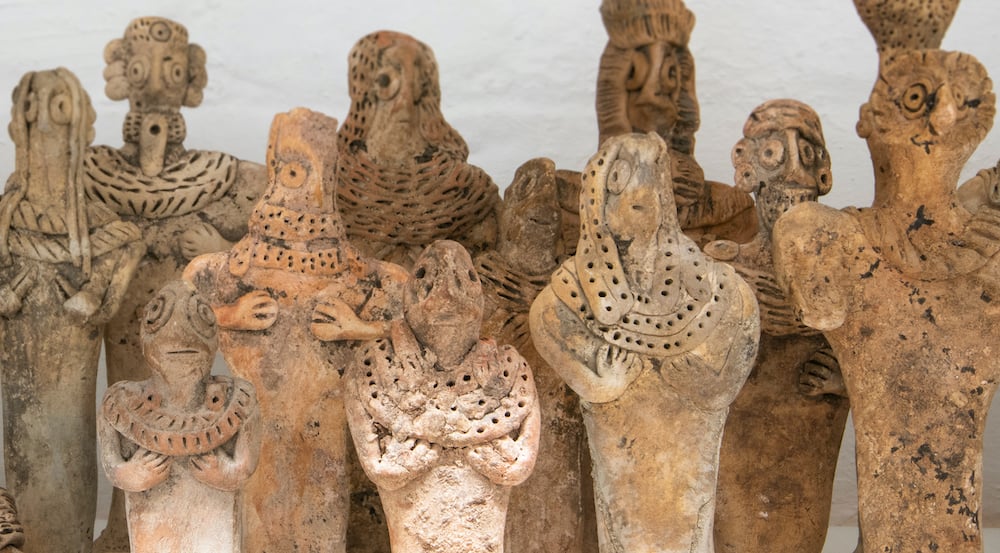
Since last summer, British Museum curators and UK authorities have been working together to investigate a trove of counterfeit Middle Eastern artifacts. Today, the museum has revealed what its experts discovered, and the results point to a new mutation in the market for illicit antiquities.
A Border Force officer at Heathrow Airport discovered the hundreds of clay figurines, pots, and tablets covered in cuneiform script in a pair of metal trunks last July. Intercepted en route from Bahrain to a private address in the UK, the objects were sent to the British Museum for inspection. There, they were discovered to be fakes.
The striking thing about the discovery, says St John Simpson, a curator at the British Museum, is not the number of counterfeit relics. It’s the type.
“These particular fakes were not of high quality but are of a type we have not seen before,” Simpson tells Artnet. “They show how there is a growing market for fakes which are sometimes traded with looted and trafficked antiquities, and are part of the same problem. There is increasing evidence for the use of the internet and social media to trade both of these categories and the market is flooded with fakes.”
Fake tablets unwrapped for assessment. ©Trustees of the British Museum 2020.
Though the practice of faking ancient objects goes back hundreds of years, this batch of supposed relics represent a new type of antiquities forgery that’s popped up in the last couple of years as countries in the Middle East and elsewhere are policing archaeological sites with greater intensity and clamping down on the import and export of cultural objects.
When the museum’s curators received photos of the objects and, eventually, the objects themselves, they were easily able to discern that they were inauthentic.
The objects in the trunks were generic ceramic shapes that were inscribed, in many cases, with gibberish cuneiform and made-up symbols. The type of clay didn’t match the period from which they purported to hail, nor did the size and thickness—a clue, perhaps, that the forgers were working from found historical photographs. They were clearly fired in a kiln as opposed to the sun and were all in one uniform piece—a rarity for truly ancient objects.
Fake cuneiform tablets in their wrapping. ©Trustees of the British Museum 2020.
As contemporary objects, the ceramics are worth virtually nothing. From an unsuspecting collector, however, they could fetch thousands of dollars, experts at the museum say.
An investigation into who was behind these objects, and where they were headed, remains ongoing. The fakes will go on view for a short stint at the British Museum when it reopens. They will be used for training purposes thereafter.
“It seems very likely that more trunks of fakes are out there, that there are more fakes than there are genuine objects,” says Simpson in a statement put out by the museum. “Consignments which are almost too perfect to believe should be treated with great caution.”